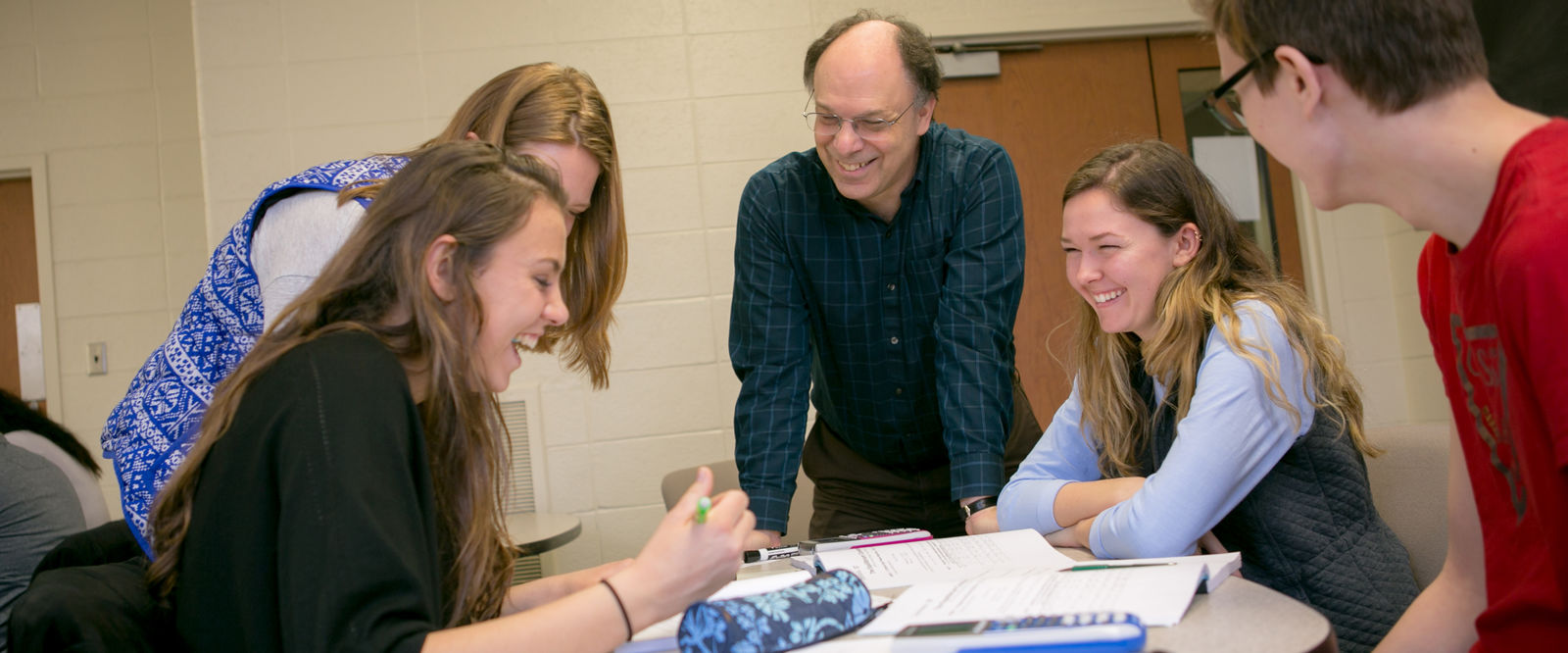
The effectiveness of POGIL has been assessed at a range of institutions and for a variety of courses.
Not only is POGIL based on educational research, but The POGIL Project strongly encourages instructors to reflect on and assess their teaching. Over the years, The Project has collected a great deal of data related to the effectiveness of POGIL in the classroom to both teach students content knowledge and to develop process skills.
POGIL Data
Several common, and important, outcomes of the effectiveness of POGIL are observed in all of these studies:
-
Student attrition is lower for POGIL than traditional methods.
-
Student mastery of content is generally higher for POGIL than traditional methods.
-
Most students prefer POGIL over traditional methods.

What is the impact of POGIL on student grades?
Many instructors have compared their final grades or specific exam grades with and without POGIL implementation. In general the withdrawals and D or F grades have decreased while the A, B and C grades increased. These results have been repeated across many different content areas in the past 10 years.
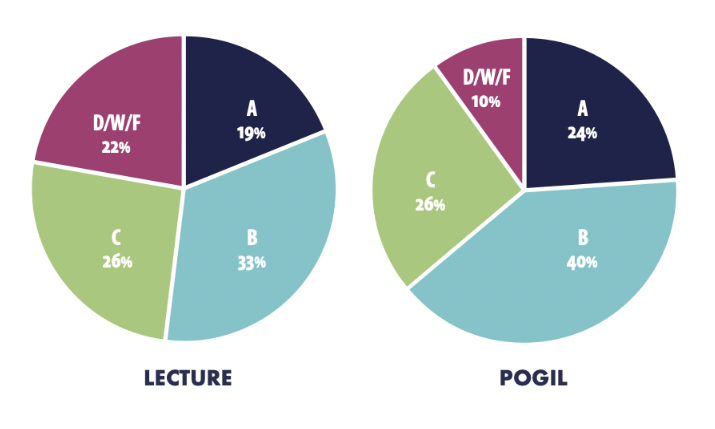
FIGURE 1: General Chemistry Grades
Comparison of course grades in chemistry at Franklin & Marshall College before and after POGIL implementation. (Farrell, Moog, Spencer, 1999)
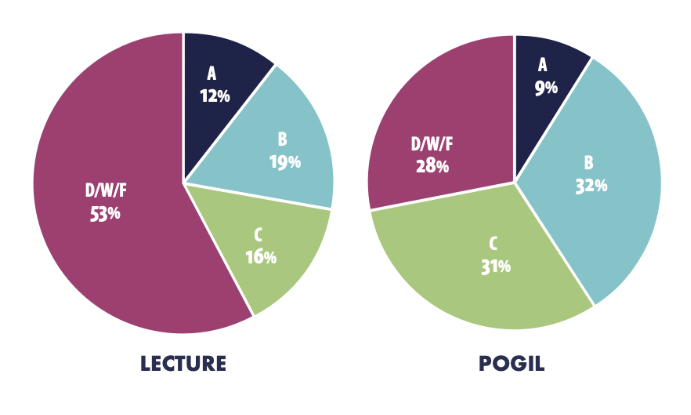
FIGURE 2: Organic Chemistry Grades
Comparison of final exam grades in organic chemistry at a large public university with and without POGIL implementation. (Ruder, Hunnicutt, 2008)
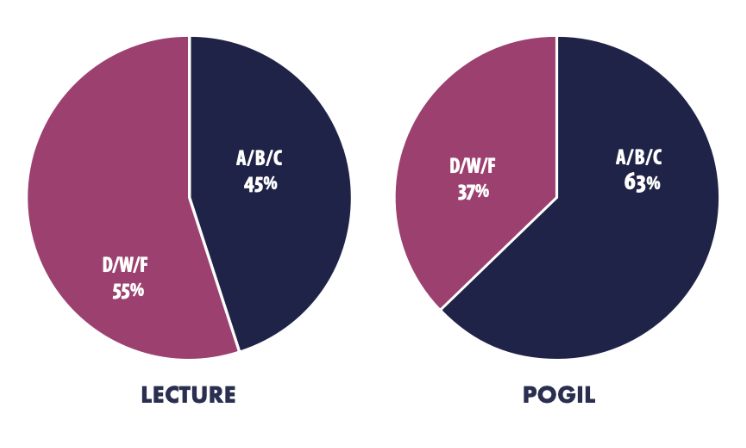
FIGURE 3: Calculus Course Grades
Comparison of course grades in calculus at a large public univeristy with and without POGIL implementation. (Bénéteau et al., 2017)
What is the impact of POGIL on content mastery and retention?
Numerous studies have indicated that students learn and retain content information better when the instructor uses POGIL pedagogy. This is true for both small amounts of information, such as a unit exam, and large amounts of information, such as an entire course.

FIGURE 4: Particulate Matter Assessment
Results of a 20-question assessment on particulate matter understanding of high school chemistry students. (Barthlow, Watson, 2014)
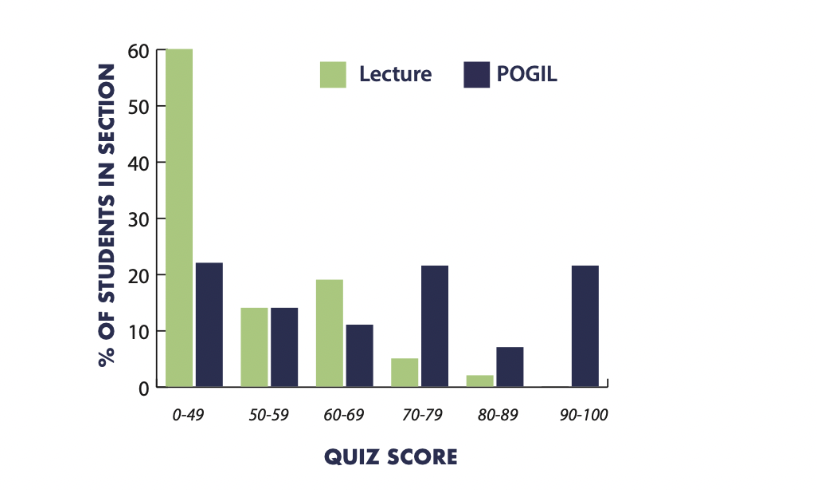
FIGURE 5: Content Retention after Organic 1
Results of an unannounced quiz covering material from Organic 1, on the first day of Organic 2 at a large public university. (Ruder, Hunnicutt, 2018)
What is the impact of POGIL on equity gaps in education?
The use of POGIL pedagogy supports the achievement of underrepresented groups in STEM fields. There is an increase in A, B, and C grades for students in these groups, decreasing the equity gap, when POGIL activities are used in the course.
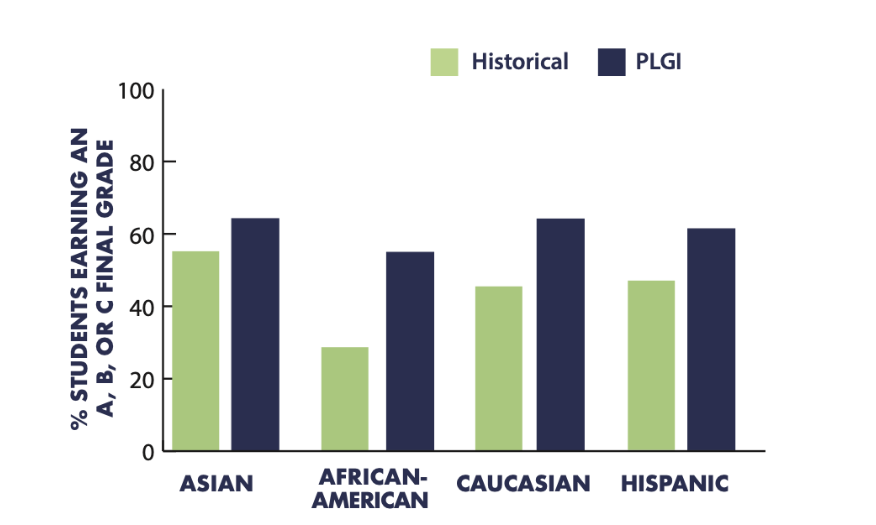
FIGURE 6: Calculus Pass Rates by Race
Pass rates (A, B, and C grades) for The University of Southern Florida calculus students before and after the implementation of Peer-Led Guided Inquiry (PGLI) using POGIL activities. (Bénéteau, 2016)
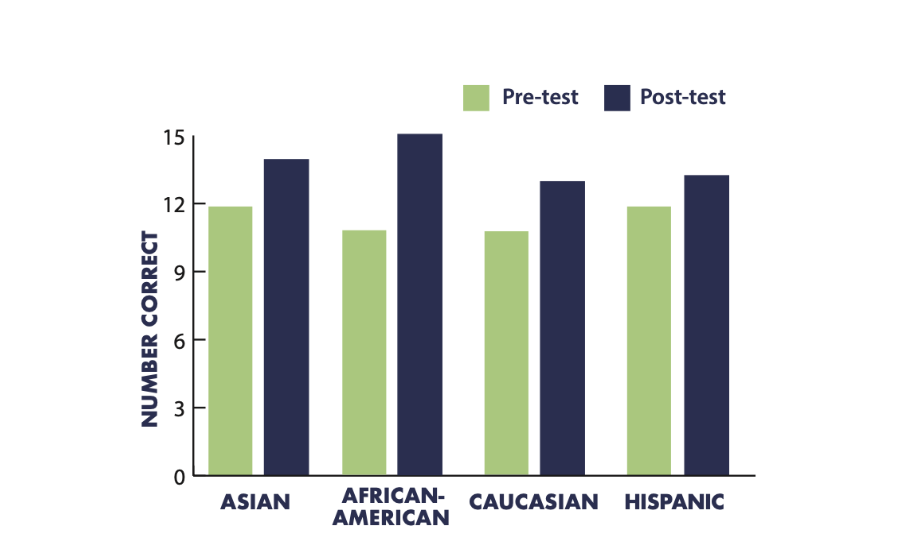
FIGURE 7: Particulate Matter Assessment
Improvement in high school chemistry student understanding of particulate matter. (Barthlow, Watson, 2014)
What is the impact of POGIL on process skills?
Students report increases in their ability and confidence related to process skills after using POGIL for a significant amount of time in their courses. Self-assessments such as the Student Assessment of Learning Gains (SALG) have been used to show this impact.
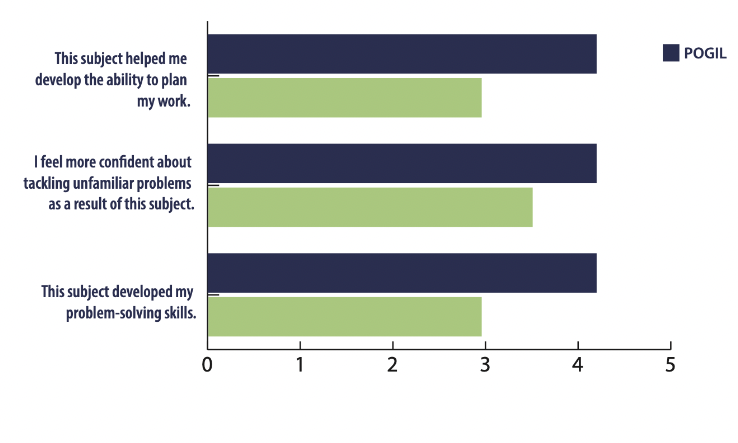
FIGURE 8: Information Technology Student Perceptions
Process skills growth in Information Technology courses. (Myers, 2012)
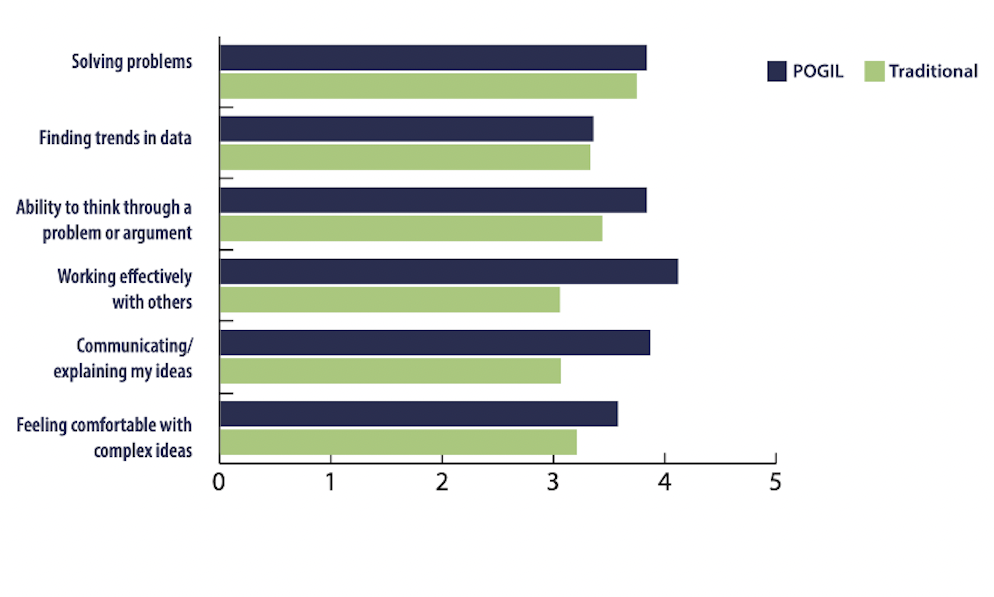
FIGURE 9: Student Assessment of Learning Gains
Process skills growth in Organic Chemistry (Straumanis, Simons, 2008)